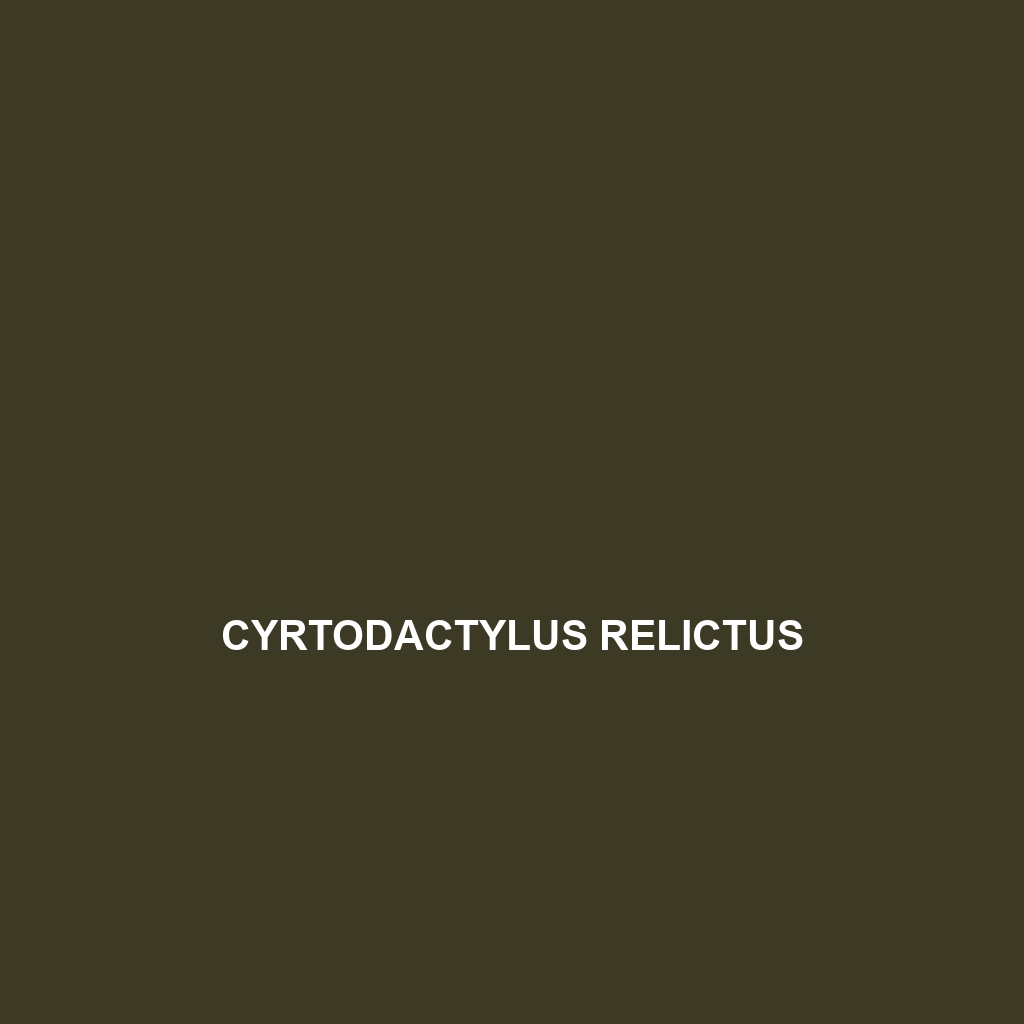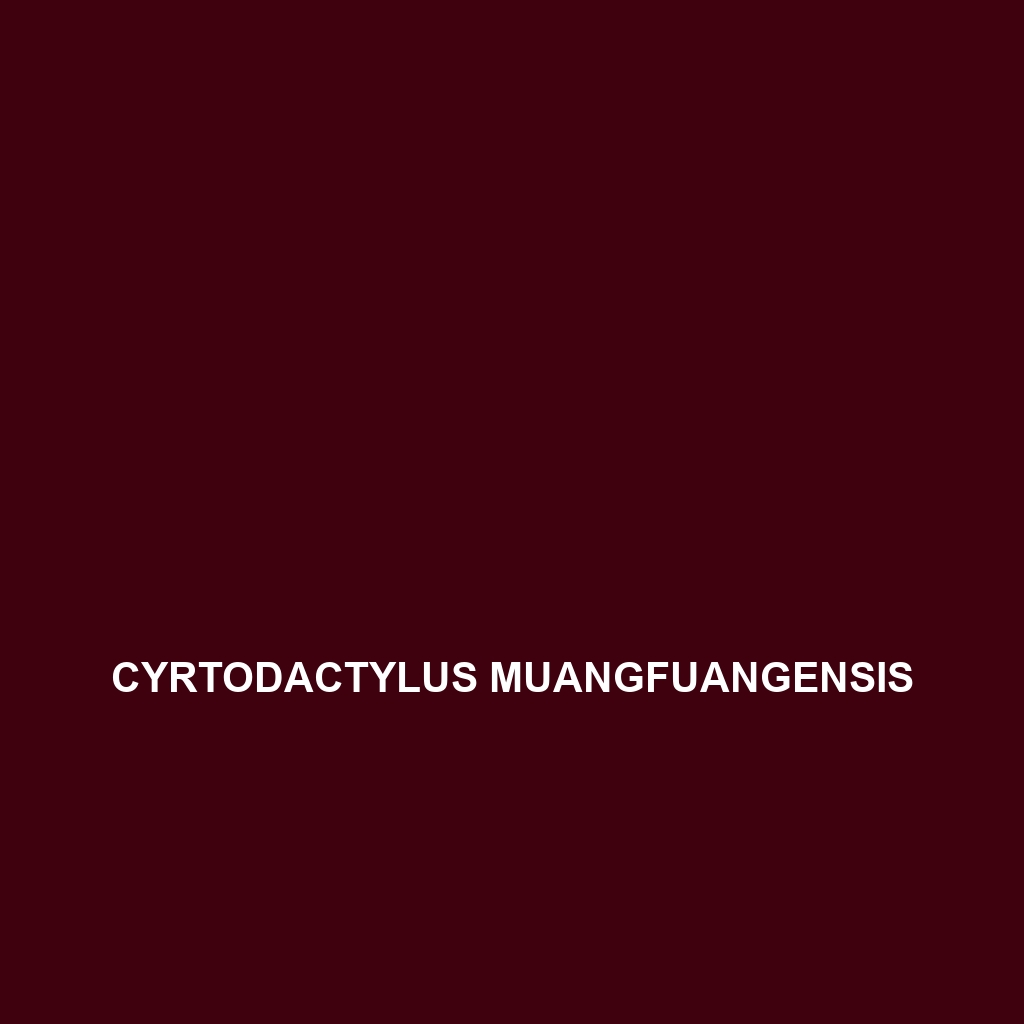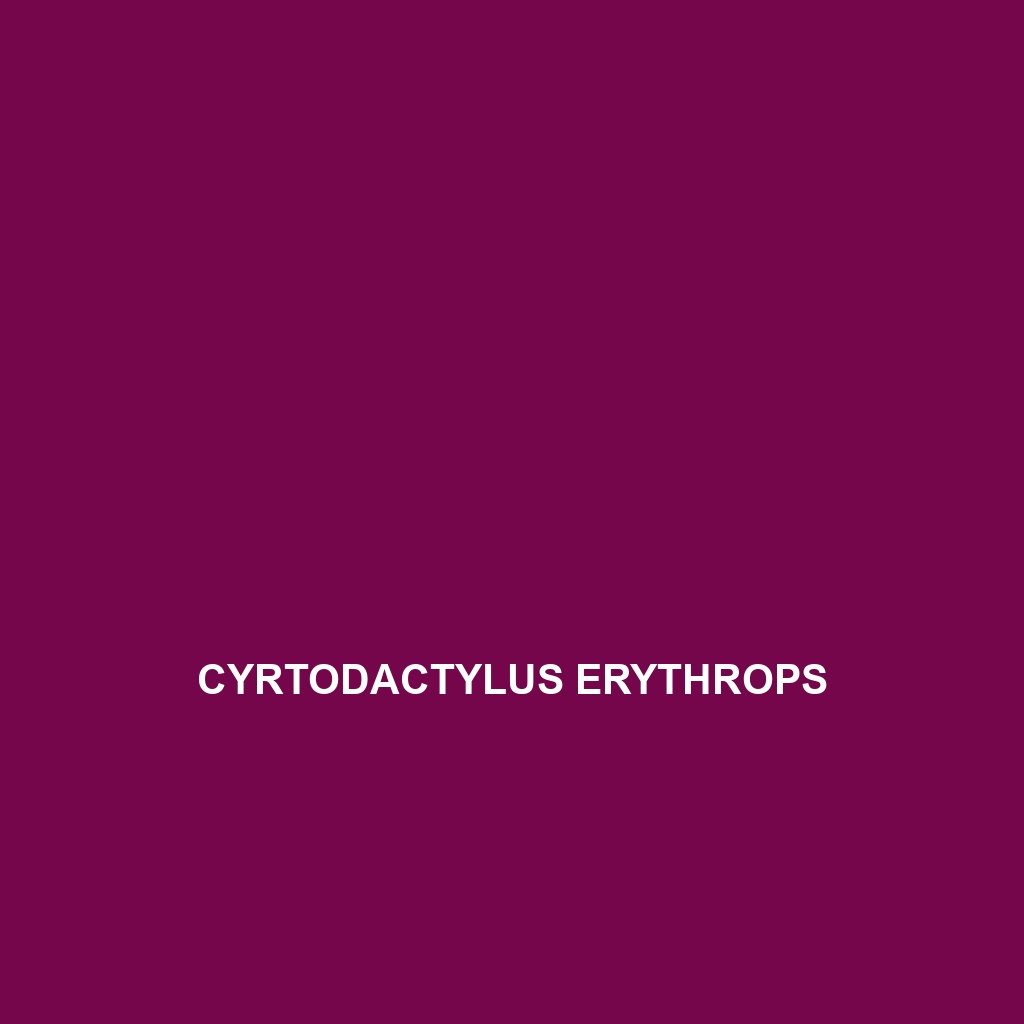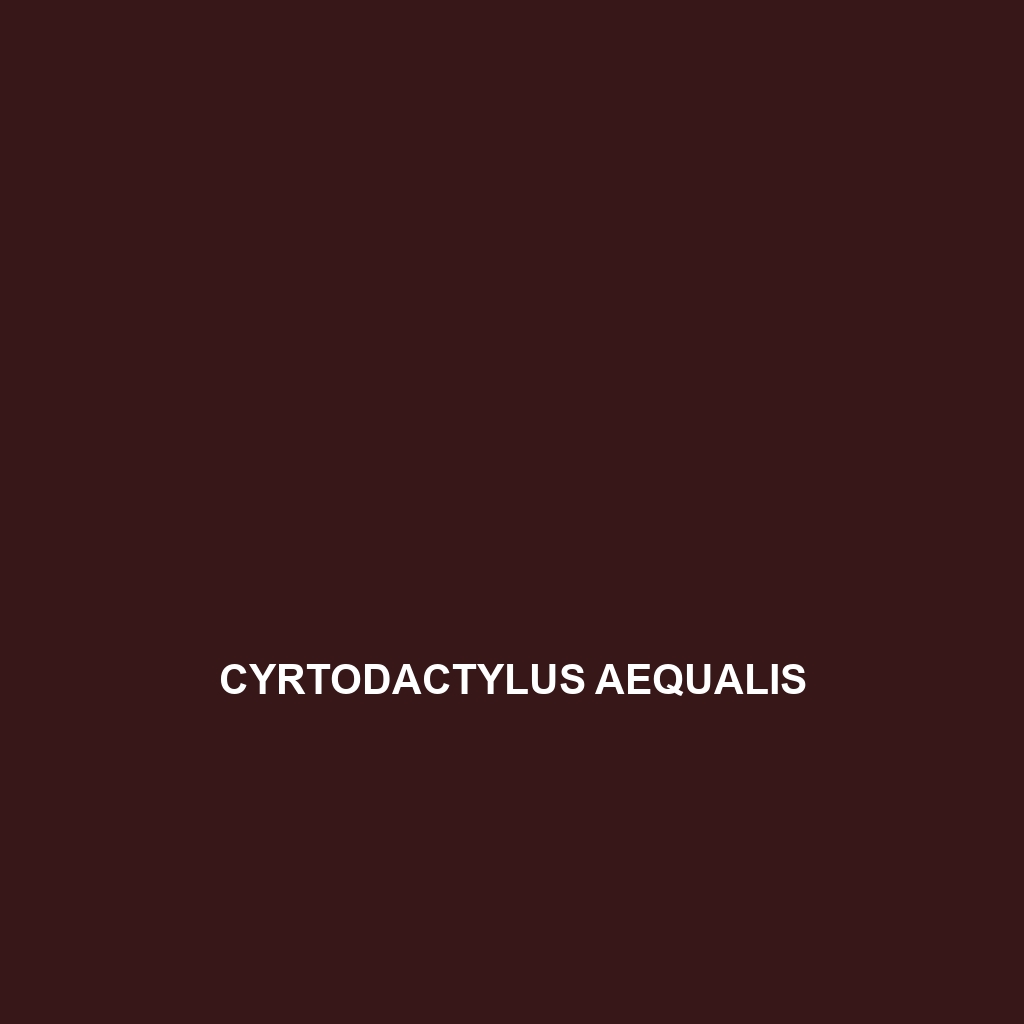Cyrtodactylus sonlaensis, a vibrant gecko from Vietnam's limestone karsts, known for its agile movements and insectivorous diet. This vulnerable species thrives in humid tropical forests and showcases remarkable adaptations such as tail regeneration, playing a crucial role in its ecosystem.
Tag: limestone karst gecko
Cyrtodactylus relictus
Cyrtodactylus relictus, or relict bendwrist gecko, a medium-sized, nocturnal insectivore native to the limestone karst formations of Southeast Asia. With its striking coloration and agile climbing abilities, this vulnerable species plays a crucial role in maintaining ecological balance within its habitat.
Cyrtodactylus muangfuangensis
Cyrtodactylus muangfuangensis, a gecko species from limestone karst formations in northern Thailand, typically measures 10-15 cm and exhibits a striking coloration of light brown to dark gray. This nocturnal, terrestrial gecko plays a crucial role in its ecosystem by controlling insect populations and is currently listed as Vulnerable on the IUCN Red List due to habitat loss.
Cyrtodactylus erythrops
Cyrtodactylus erythrops is a small, nocturnal gecko native to the limestone karst regions of Southeast Asia, characterized by its distinctive reddish-brown coloration and agile climbing abilities. This vulnerable species primarily feeds on insects and plays a crucial role in its ecosystem by regulating insect populations.
Cyrtodactylus darevskii
Discover the Cyrtodactylus darevskii, a vulnerable gecko species from Southeast Asia's tropical forests, known for its slender build of 10-15 cm, intricate camouflage patterns, and nocturnal hunting habits. This remarkable insectivore plays a crucial role in its ecosystem, contributing to the balance of biodiversity while thriving in limestone karst environments.
Cyrtodactylus aequalis
The Cyrtodactylus aequalis, known for its distinctive pale brown to deep orange coloration and nocturnal behavior, primarily inhabits Southeast Asia's subtropical forests and limestone karst formations. This gecko, averaging 6 to 8 inches in length, plays a crucial role in its ecosystem by controlling insect populations while facing conservation challenges due to habitat loss.</p>





